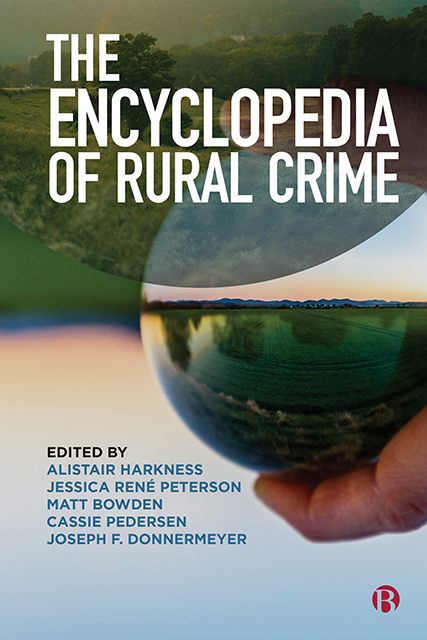Book contents
3 - Crime and Place
Published online by Cambridge University Press: 20 June 2023
Summary
It can be argued that theories of crime and place are the most prolific amongst all genres of criminological theory. As Wilcox and others demonstrate, the variety of place-based theories in criminology span nearly its whole history and include an incredible variety of perspectives. Often associated with the Chicago School of Sociology, the theory of social disorganization was one of the earliest attempts to examine the economic, normative and social milieu of neighbourhoods and variations in levels of crime, especially juvenile delinquency.
Subsequent generations of criminological theories about place arrived when the focus shifted away from a neighbourhood-level examination to smaller sub-units, such as ‘hot spots’, the situational nature of crime, routine activities and crime, the concept of broken windows and crime, crime prevention through environmental design and crime mapping. The shift from larger units of analysis to smaller ones was also accompanied by a significant transition from a focus on places as generators of criminal behaviour to localities with relative differences in risk to victimization.
Even though they are urban-based theories, considerations of crime and place were and continue to be instrumental in the development of rural criminology. The one exception to the urban-centric origins of crime and place theories is the one known as civic community theory.
Social disorganization theory was first developed by Shaw and McKay, both academics from the Chicago School of Sociology in the first half of the twentieth century. Their focus was on explaining why certain neighbourhoods of Chicago differ so greatly in rates of delinquency, describing these areas as possessing such characteristics as high levels of poverty and population turnover. Their essential argument was that those forms of social control as expressed through a strong, locally based social order – both through various social institutions such as schools and the willingness of neighbours to watch out for each other – displayed lower rates of delinquency because they were not disorganized.
The significance of this original formulation is three-fold. First, it shifted thinking about crime away from explanations that emphasized the pathologies of individuals to a more sociologically focused explanation.
- Type
- Chapter
- Information
- The Encyclopedia of Rural Crime , pp. 20 - 22Publisher: Bristol University PressPrint publication year: 2022



